latest solo show
Equimanity
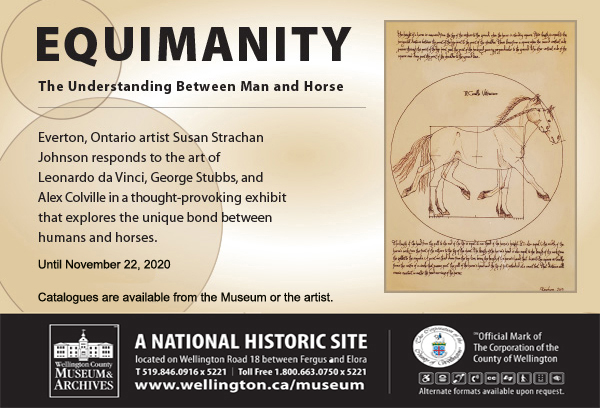
After Colville
In Susan’s show Equimanity, she asked why three great artists portrayed their horses in odd ways, even though each one could draw perfectly well from life. (Leonardo da Vinci, George Stubbs and Alex Colville). Her conclusion was that they were all making a statement about how horses behave, or are mistreated, or are slightly anthropomorphic. For example, she believed that Colville’s famous horse from “Horse and Train” (1954) was meant to be “phantasmagorical”, because a horse could not move in real life in the way he painted it, and would not gallop on a railway track, even if a train was not approaching. So she repainted the galloping horse with the correct anatomy and footfall, to emphasize the point that it could still be a “dark horse” , but in a different sense. Colville had been deeply affected by his war artist work at the end of the Second World War, documenting the horrors of Bergen and Belsen prisoner of war camps, and Susan believed his intention was to show that unless some “being” steps out of the line of command, and faces the “war machine” head on, we will never have peace.
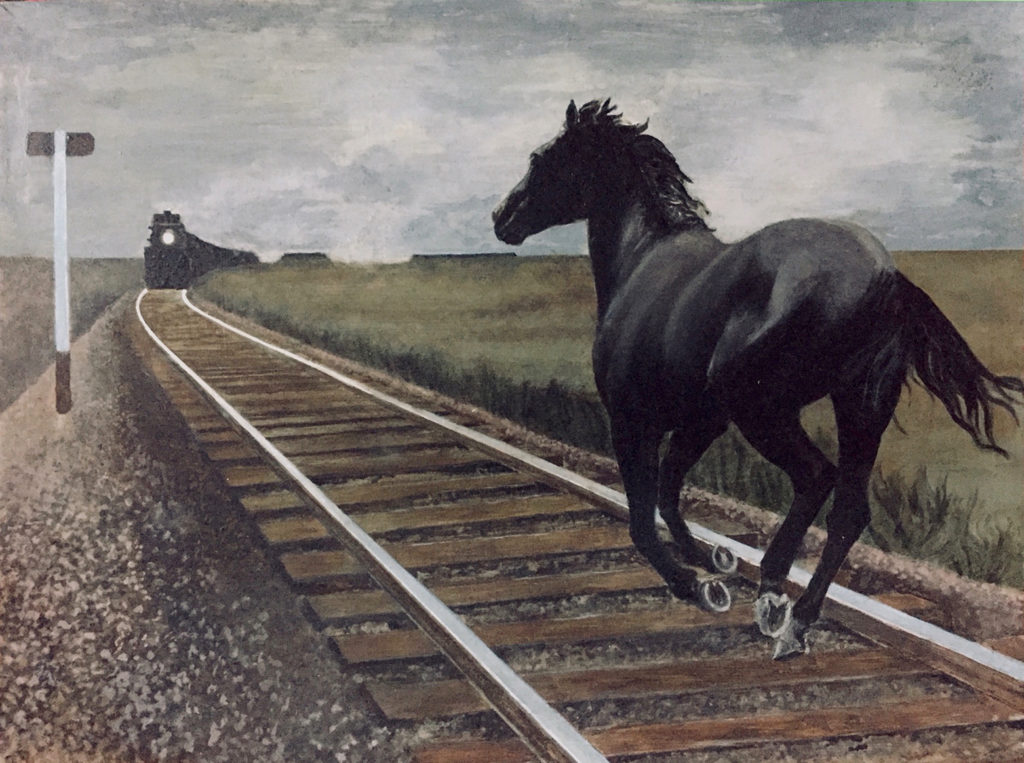
After Stubbs
George Stubbs illustrated and self-published the groundbreaking “The Anatomy of the Horse” in 1766. He carried the bodies of horse up to his rooms where he dissected and drew every body part. However, since he was working approximately 100 years before the first widely available artificial refrigeration, by the time he had studied all the musculature of his subject, (which sometimes took ten weeks) a lot of decay had of course occurred, so much of the muscle and sinew had deteriorated badly. In addition, he was working 100 years before photography, so it was difficult to decipher how horses moved. These two factors sometimes caused odd anatomy in his paintings.
Stubbs’ most famous horse portrait, Whistlejacket, hangs in the National Gallery in London, England. It is perhaps the best known horse portrait in the world. But there are anatomical faults due to the reasons noted above, and Susan chose to paint the horse as he probably would have looked like.
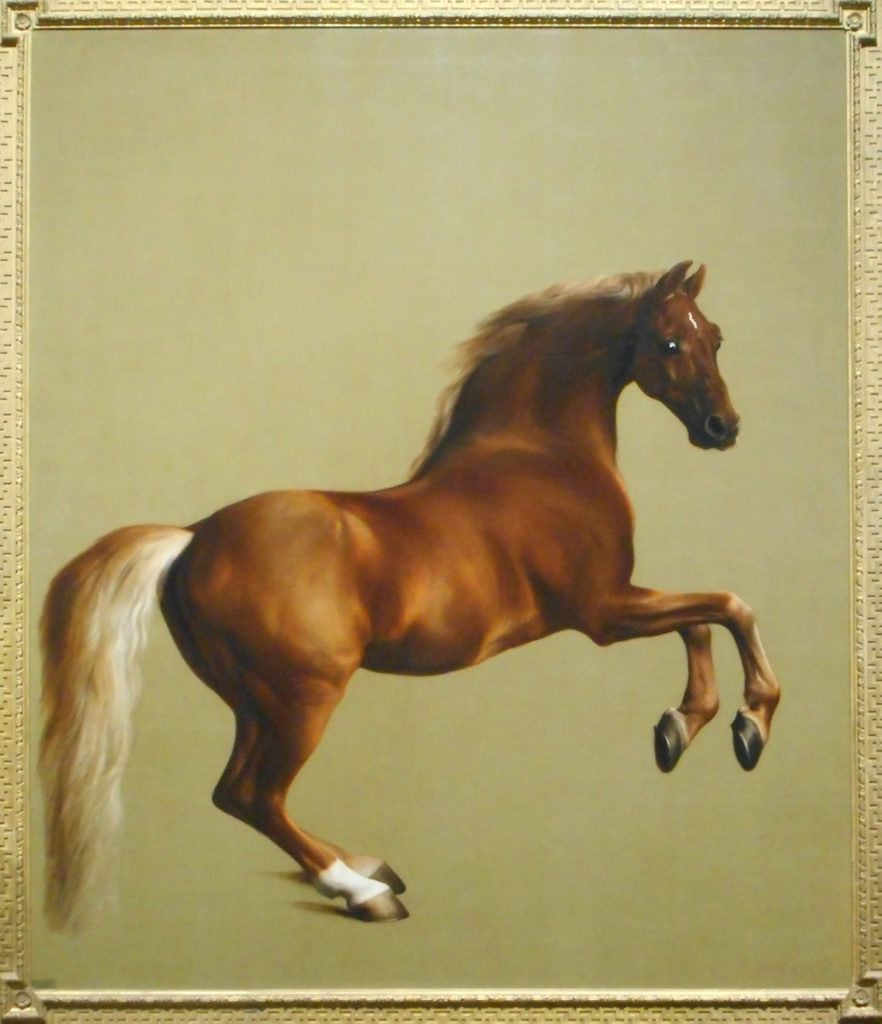
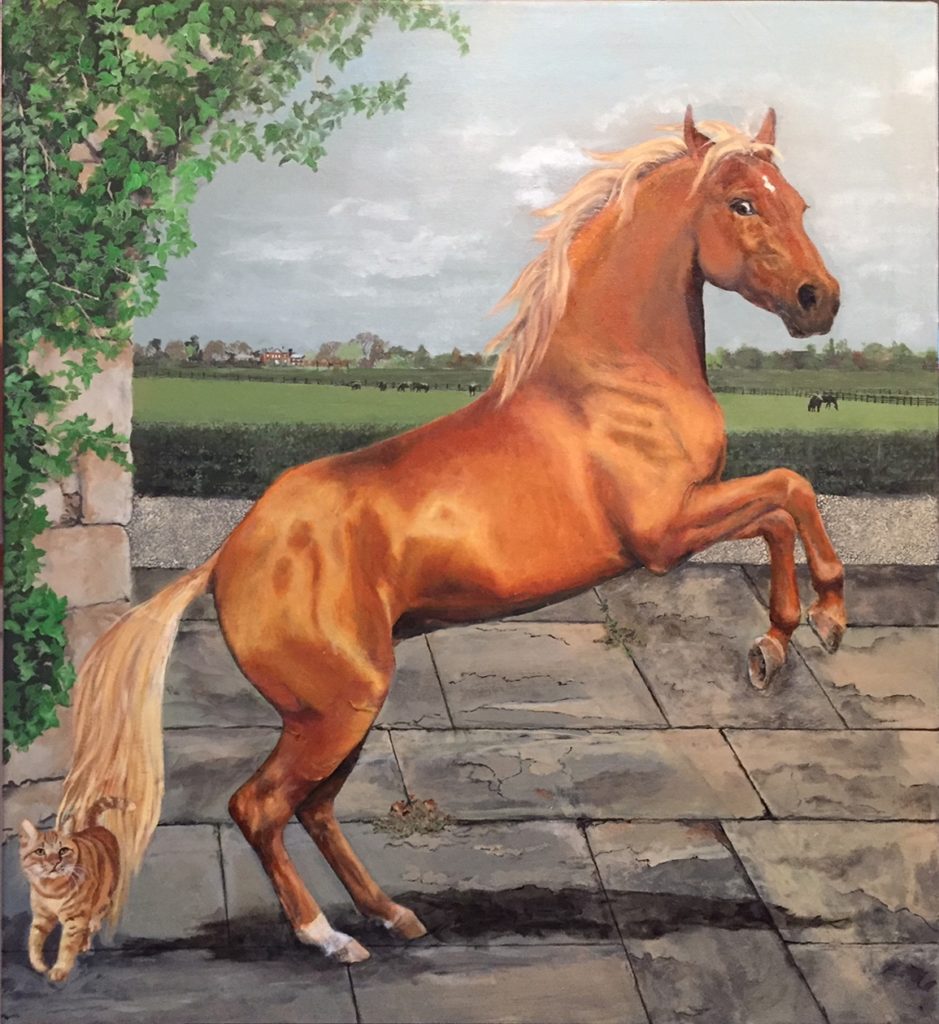
After Leonardo da Vinci
Leonardo lived in a time when horses were cruelly treated and used mostly as weapons of war. Almost every horse he drew or painted had its mouth open, which in horses occurs only when they are neighing, biting, or being jabbed in the mouth with a cruel bit. Susan believes this was Leonardo’s way of protesting against cruelty. Her drawing below illustrates the different occasions when a horse opens its mouth.
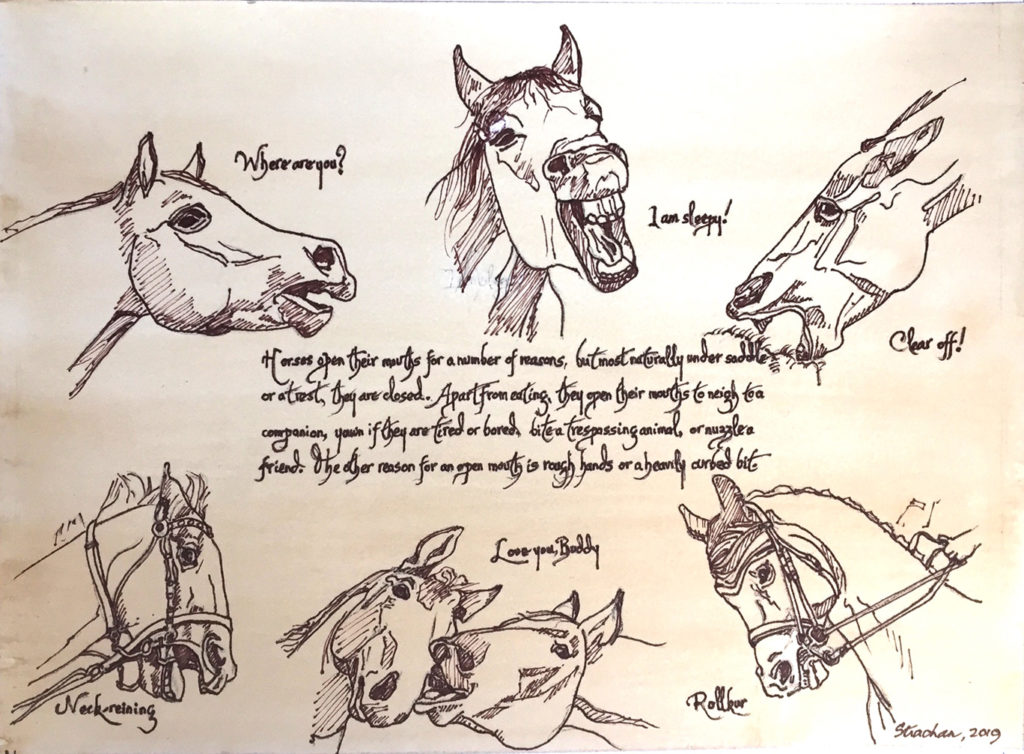
A 44 page catalogue of the show is available from the artist for just the cost of postage.